The ideal gym flooring thickness depends on your workouts, equipment, and subfloor, but most home gyms perform best with 8–10 mm rubber flooring. Thicker options (12–40 mm) are recommended for heavy lifting, while lighter training areas can use 4–6 mm.
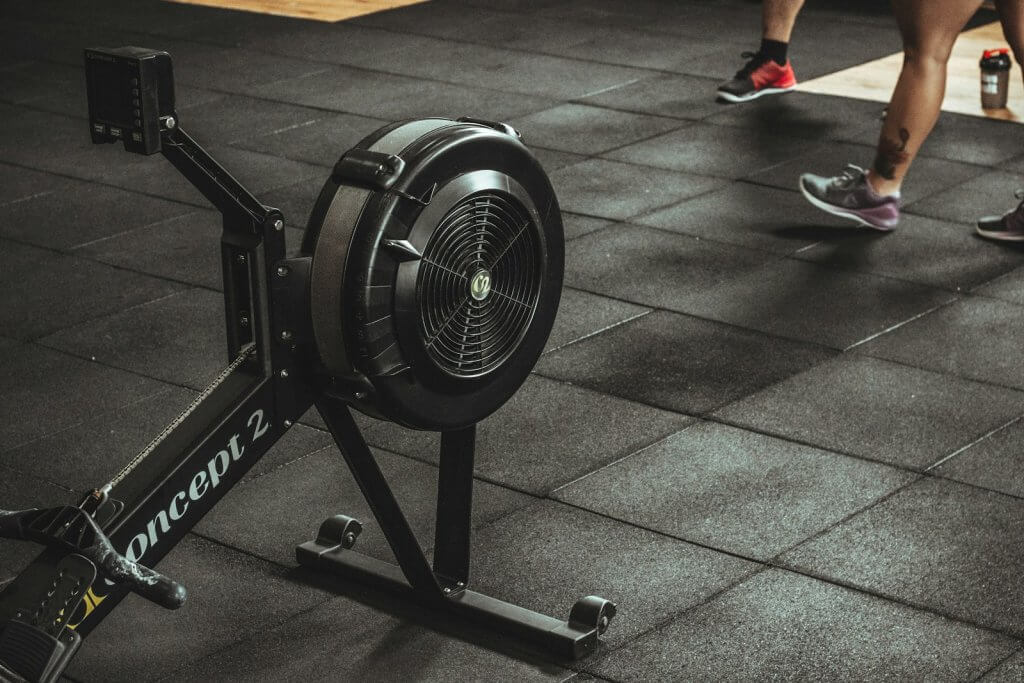
Choosing the right thickness supports joint comfort, protects the floor, reduces noise, and helps maintain a safe workout environment. Below is a clear, research-backed guide to help you pick the best thickness for your home or commercial setup.
Factors That Determine How Thick Gym Flooring Should Be
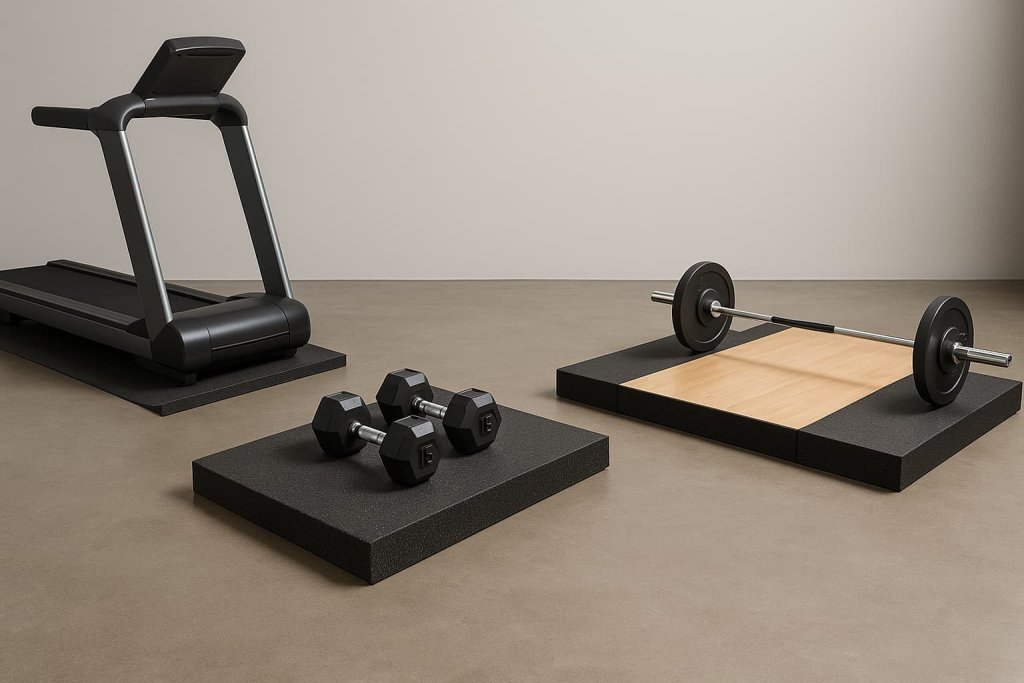
1. Type of Training
Different activities create different levels of impact.
- Cardio and machines: Low impact
- Strength training: Moderate impact
- Deadlifts, Olympic lifting: High impact
Higher impact requires thicker flooring to support stability and reduce force transfer.
2. Equipment Weight
Heavier dumbbells, barbells, and machines benefit from more shock absorption.
3. Subfloor Type
- Concrete: Naturally strong; thinner flooring is often fine.
- Hardwood or upper floors: Requires thicker protection to reduce vibration and structural stress.
4. Noise and Vibration Control
Thicker rubber supports noise reduction, especially important for apartments, shared homes, or upstairs rooms.
5. Budget and Material Type
Tiles, rolls, and specialty impact tiles vary in price. Thicker tiles cost more but offer more protection.
Recommended Gym Flooring Thickness by Workout Type
1. Best Thickness for Cardio and Light Training (4–6 mm)
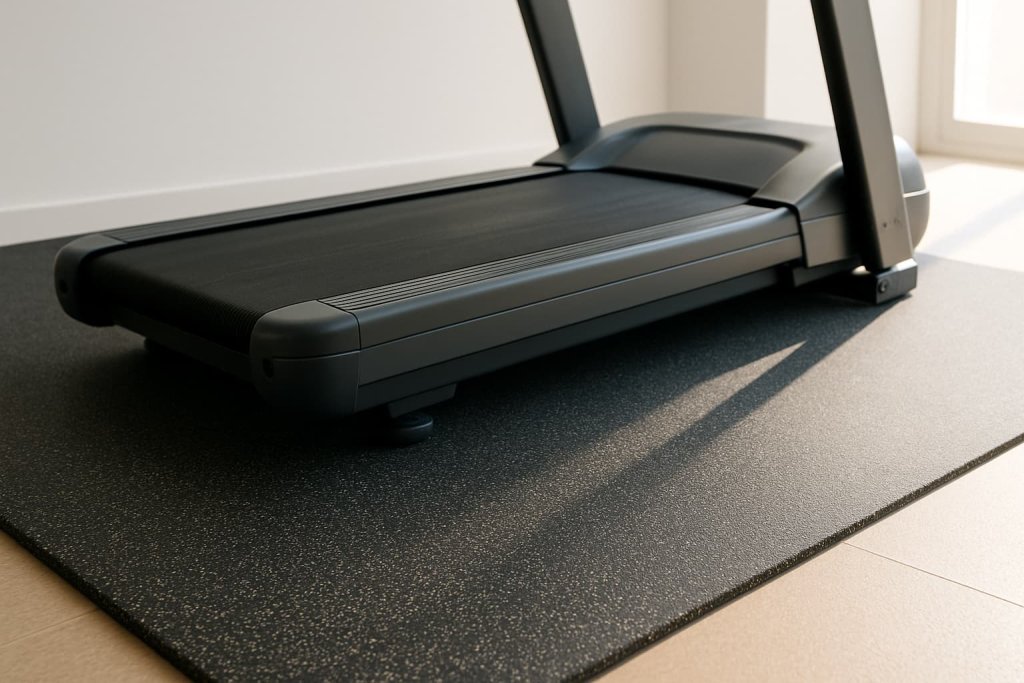
Recommended thickness: 4–6 mm rubber
Ideal for:
- Treadmills
- Exercise bikes
- Rowers
- Functional fitness & light dumbbells
This thickness supports basic floor protection and reduces vibrations from machines. It’s affordable and easy to install.
2. Best Thickness for General Strength Training (8–10 mm)
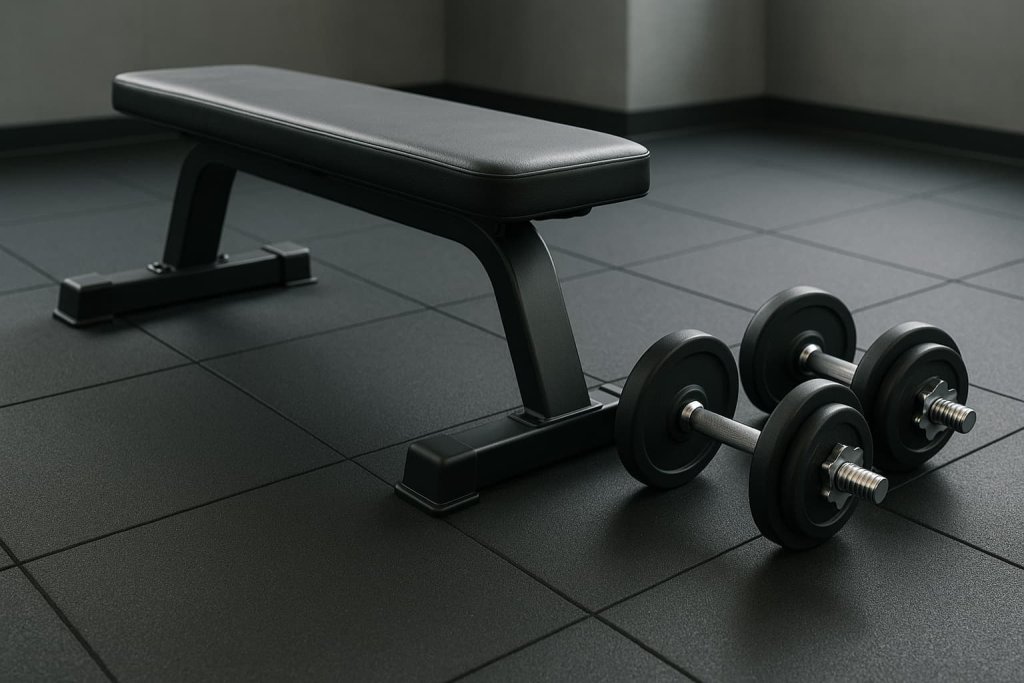
Recommended thickness: 8 mm (up to 3/8″)
Suitable for:
- Dumbbells under ~120 lb
- Barbells without aggressive drops
- Mixed training rooms
- Multiuse home gyms
This is the most common choice for home gyms. It supports noise reduction and provides enough durability for typical lifting.
3. Best Thickness for Heavy Lifting and Barbell Drops (12–20+ mm)
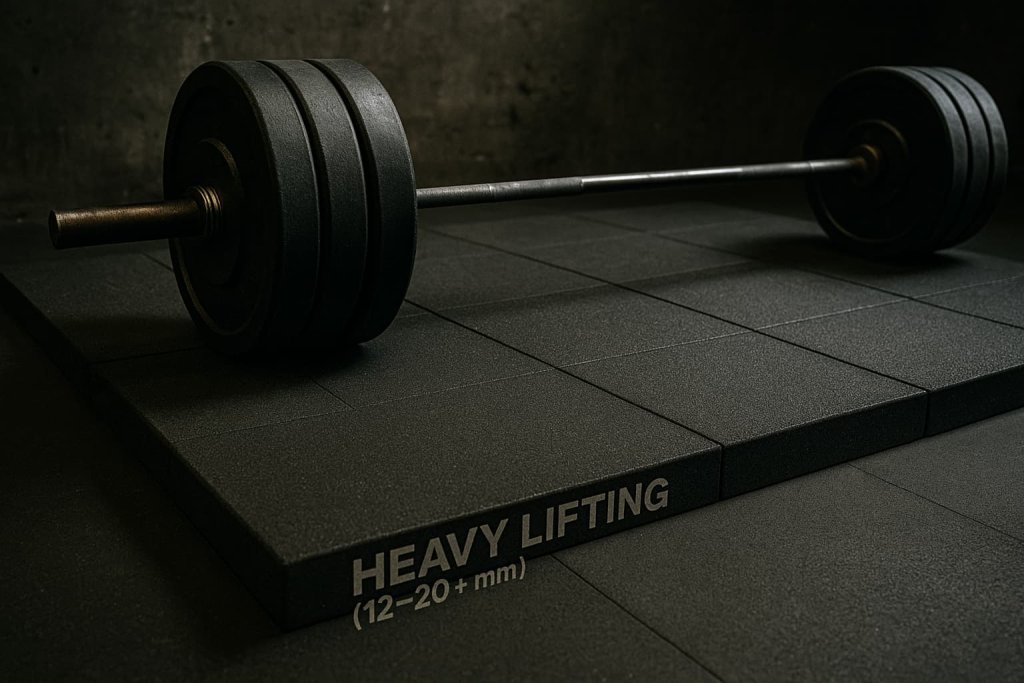
Recommended thickness: 12 mm (1/2″) minimum, 20–40 mm ideal for heavy drops
Recommended for:
- Deadlifting
- Olympic lifting
- Cross-training style workouts
- Commercial gyms
Thicker tiles absorb more force, support better joint comfort, and protect floors from repeated weight drops. Gyms often use 20–40 mm impact tiles or pair 1/2″ mats with plywood platforms.
Best Thickness Based on Your Subfloor
Concrete Garage or Basement
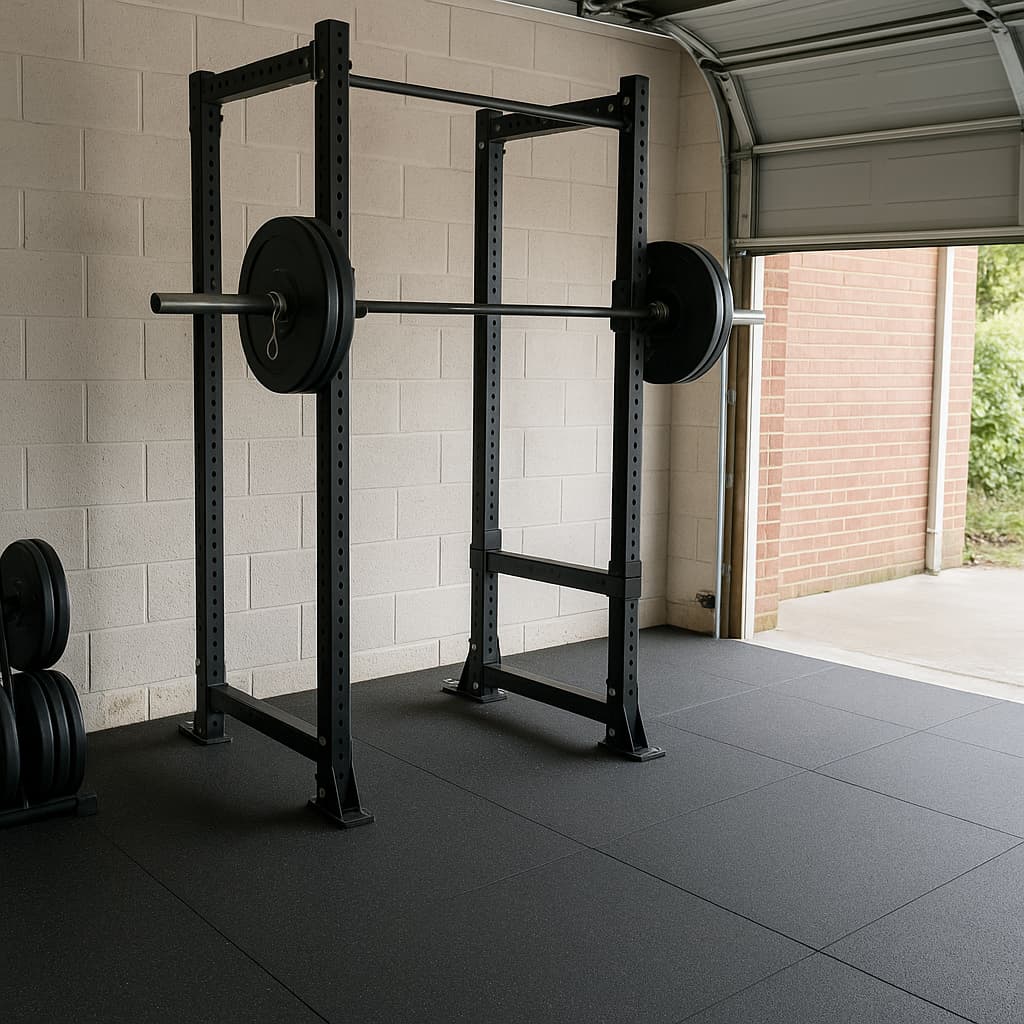
- 8 mm works for most setups
- 12–20 mm recommended if you drop weights
Concrete absorbs impact well, so you don’t always need extreme thickness unless noise is a concern.
Hardwood or Upper Floors
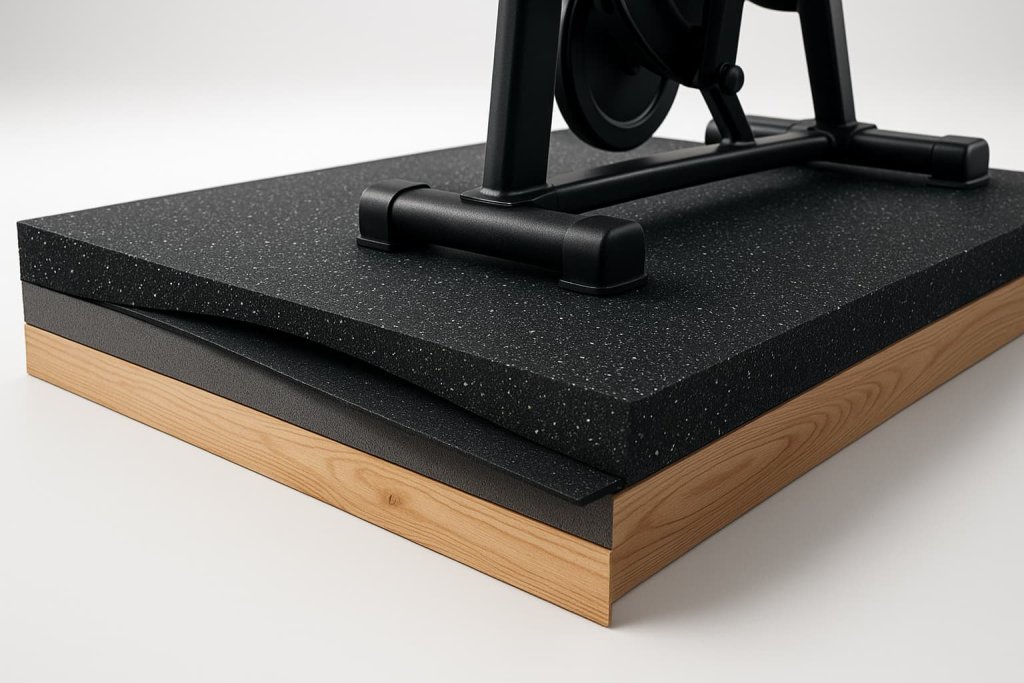
- 10–20 mm to support noise reduction and prevent floor damage
- Consider adding an underlayment (cork or foam) beneath rubber for vibration control
Apartments or Shared Homes

- Prioritize noise and vibration control
- 12–20 mm rubber may help minimize disturbance
- A dual-layer setup (rubber + platform) may support better structural protection
Shock Absorption, Noise Control, and Safety
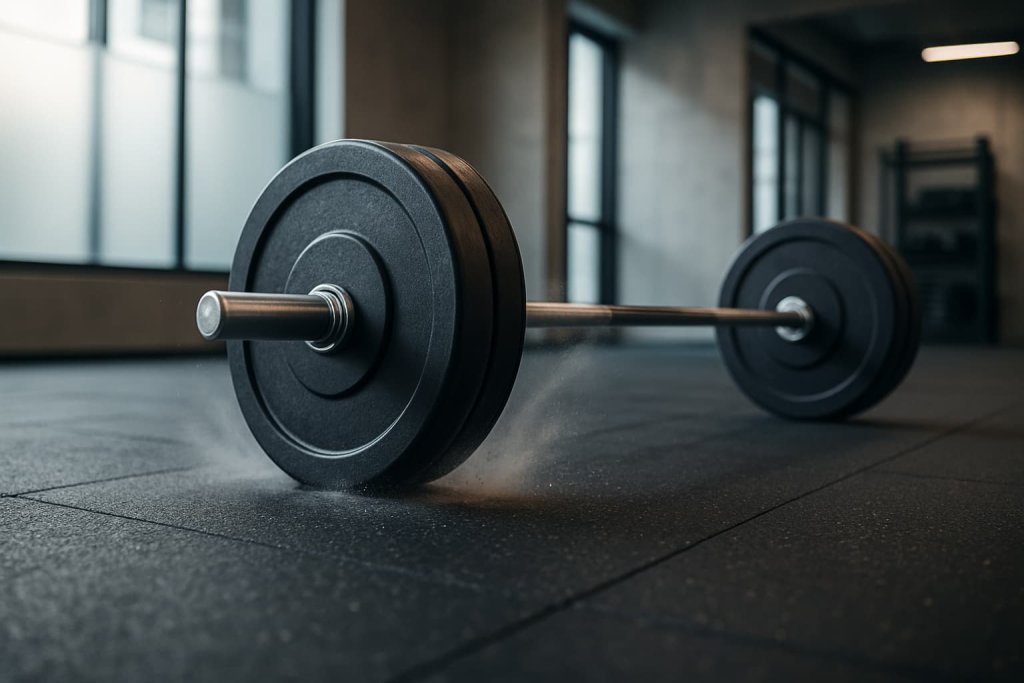
Thicker flooring supports safer training by reducing:
- Stress on joints
- Vibration through walls and floors
- Impact damage from dropped weights
- Noise transmission that may disturb family or neighbors
For athletes who lift frequently, improving ground impact absorption may support long-term joint comfort and workout stability.
Tip: Look for flooring tested with recognized sports standards such as ASTM F2772, linked below for reference through a safety organization (no medical claims):
- Visit the U.S. Consumer Product Safety Commission for general flooring and equipment safety information: CPSC Health & Safety Resources.
Cost Expectations by Thickness
| Thickness | Typical Use | Estimated Cost |
|---|---|---|
| 4–6 mm | Cardio & light training | Lower cost |
| 8–10 mm | General home gym | Moderate cost |
| 12–20 mm | Heavy lifting | Higher cost |
| 20–40 mm | Powerlifting/Olympic lifting | Premium cost |
(Prices vary by manufacturer, density, and material quality.)
For comparison of safe material standards, you can review guidance from the U.S. Environmental Protection Agency (EPA) on indoor materials:
EPA Indoor Air Quality & Materials.
Frequently Asked Questions
Is 8 mm gym flooring thick enough?
Yes—8 mm supports most general strength training and mixed home gym use, as long as you’re not dropping heavy weights.
Do I need 1/2-inch flooring for deadlifts?
If you drop weights or lift heavy, 1/2 inch (12 mm) is a safer minimum. Higher impact setups may benefit from 20–40 mm tiles.
Can I put gym flooring over hardwood?
Yes—rubber flooring supports protecting hardwood. Use 8–12 mm or add an underlayment for vibration reduction.
What thickness is best for apartments?
A layered setup or 12–20 mm flooring may help reduce noise and vibration when working out in shared or upper-floor spaces.
Is thicker gym flooring always better?
Not always. Thicker flooring supports better shock absorption, but for low-impact cardio or light training, 4–6 mm is sufficient.
What’s best for a garage gym?
Concrete allows you to use 8–10 mm for most workouts. Heavy lifters should choose 12–20+ mm.
Read Also: 8 Best Thick Yoga Mats for Joint Support and Home Workouts
Conclusion
Choosing the right gym flooring thickness supports safe movement, improves comfort, reduces noise, and helps protect your home. Most home gyms perform well with 8–10 mm, while heavy lifting areas benefit from 12–40 mm tiles or layered platforms. Select thickness based on your workouts, equipment, and flooring type to support a healthier, safer training environment.
